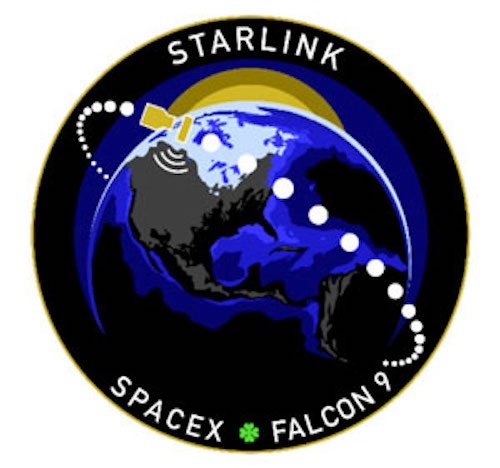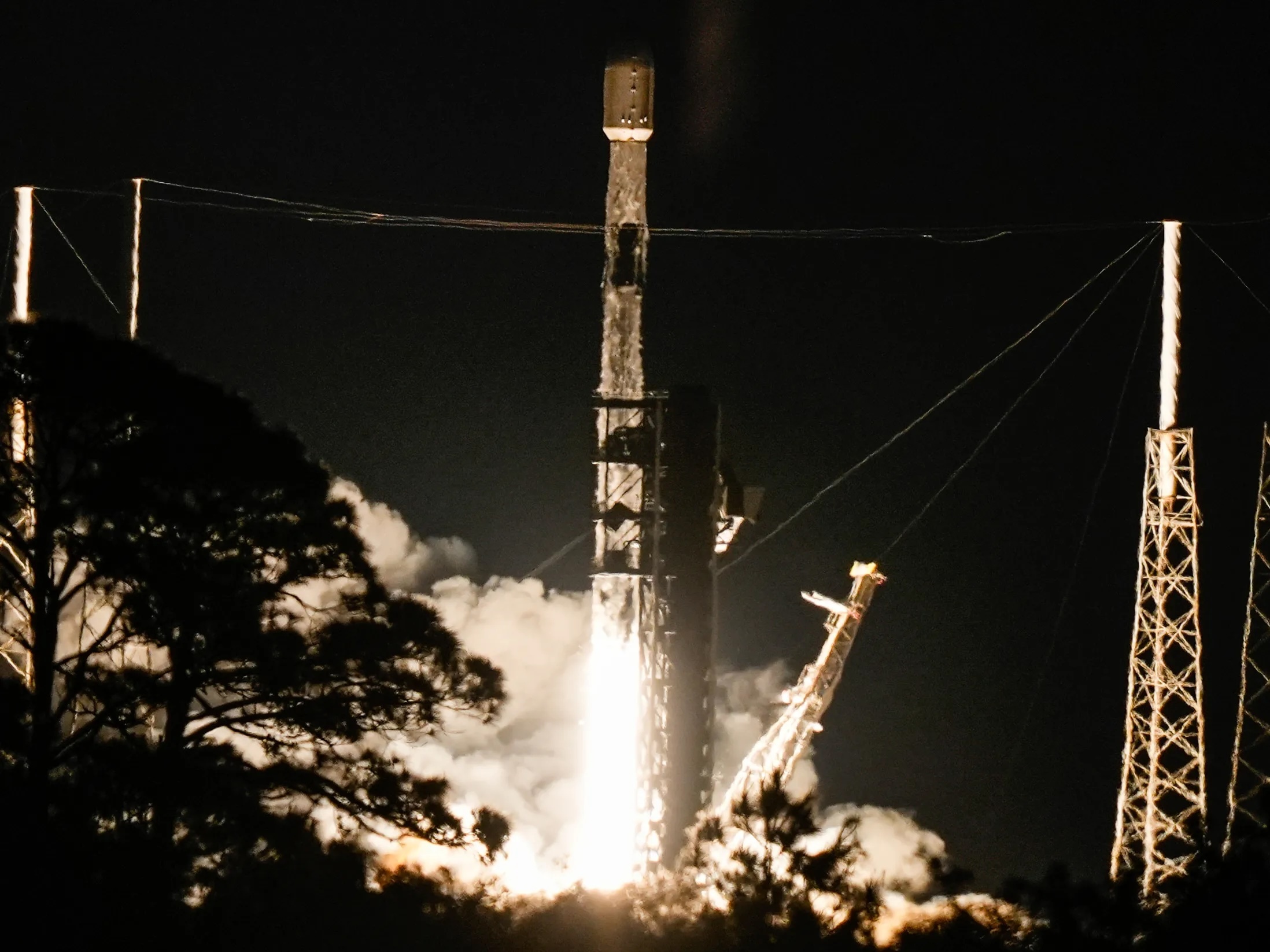14.04.2025

SpaceX launches Falcon 9 rocket seconds after midnight Monday; booster lands for record 27th time

Seconds after the stroke of midnight, a SpaceX Falcon 9 lifted off early Monday morning on a noteworthy endurance-test mission: The first-stage booster logged an unprecedented 27th launch and landing.
The Falcon 9 illuminated darkened Cape Canaveral Space Force Station at 12 a.m. EDT, then ascended to the southeast and deployed 27 Starlink broadband satellites into low-Earth orbit.
Monday's launch happened just more than 27 hours after another weekend SpaceX mission Saturday night from pad 39A at NASA's Kennedy Space Center. That Falcon 9 deployed 21 Starlink satellites, 13 of which utilize direct-to-cell communications capabilities.
SpaceX's much-traveled booster from Monday's launch previously propelled CRS-22, Crew-3, Turksat 5B, Crew-4, CRS-25, Eutelsat HOTBIRD 13G, O3B mPOWER-A, PSN SATRIA, Telkomsat Merah Putih 2, Galileo L13, Koreasat-6A and 15 Starlink missions.
After descending, the booster wrapped up Monday's Starlink 6-73 mission by touching down aboard SpaceX's drone ship Just Read the Instructions in the Atlantic Ocean a bit more than eight minutes after liftoff.
In a 12:09 a.m. tweet, SpaceX officials noted the booster had just completed "the first 27th launch and landing of an orbital class rocket."
SpaceX's late-night Falcon 9 liftoff marked the 30th orbital rocket launch of the year thus far from Cape Canaveral Space Force Station and NASA's neighboring Kennedy Space Center.
If that pace holds, the speedy cadence would surpass the newly established record of 93 annual launches last year.
Looking ahead, NASA and SpaceX will team up a week from Monday to launch a Dragon spacecraft on a Falcon 9 on the company's 32nd commercial resupply services mission to the International Space Station.
The rocket may launch as early as 4:15 a.m. April 21 from pad 39A at Kennedy Space Center.
"Along with food and essential equipment for the crew, Dragon is delivering a variety of experiments, including a demonstration of refined maneuvers for free-floating robots," a NASA press release said.
"Dragon also carries an enhanced air quality monitoring system that could protect crew members on exploration missions to the Moon and Mars, and two atomic clocks to examine fundamental physics concepts, such as relativity, and test worldwide synchronization of precision timepieces," the press release said.
Quelle: Florida Today
